The Museo Nacional Centro de Arte Reina Sofía, or as most people call it, the Reina Sofía, attracts four million people per year. And probably 3,999,999 of them all gravitate here to see one thing: Pablo Picasso’s striking, plus-sized painting, “Guernica,” a work of art that shocks and awes the viewer into grasping the brutality of war, in general, and the Spanish Civil War, in particular.
But there are 21,000 artworks in the collection, meaning there are a lot of hidden gems at Reina Sofia Museum. The museum has a focus on Spanish artists, but it also boasts works by an international cadre of famous artists as well. Like the Louvre in Paris with the “Mona Lisa,” it’s easy to get caught up in the frenzy to see “Guernica.”
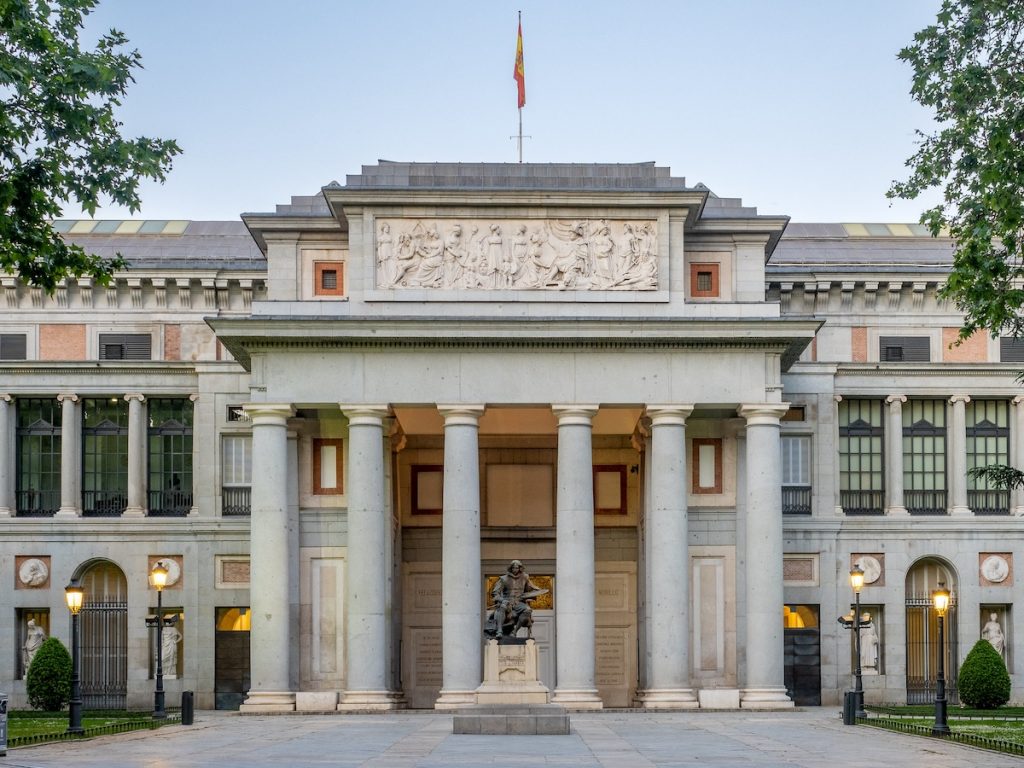
It turns out, there are some really hidden gem masterpieces of art at the Reina Sofía Museum. You just have to will yourself away from Picasso’s most famous painting for a while. And if you do, you’ll be rewarded with lesser-known but stunning pieces of art, artists who don’t get the attention they deserve, and relatively untrammeled swaths of the museum. Here is what else to see at the Reina Sofía Museum in Madrid.

Photography collection
By the time visitors get to the third floor of the Reina Sofía, they’re too exhausted to go up to the fourth. Don’t make this mistake. The fourth floor has some real gems, especially the photography collection.
Some real masterpieces are on display here include Man Ray’s famous “Les Larmes,” Robert Capa’s shocking “Death of a Loyalist Militiaman” from the Spanish Civil War, the dual midgets in Christopher Hara’s 1989 photo “Houses of Haro,” and Francesc Catalá-Roca’s “Gypsy Girl.”
Look out for these highlights:
- Man Ray’s “Les Larmes” (“The Tears”)
- Robert Capa’s “Death of a Loyalist Militiaman”
- Christopher Hara’s “Houses of Haro” (1989)
- Francesc Catalá-Roca’s “Gypsy Girl”
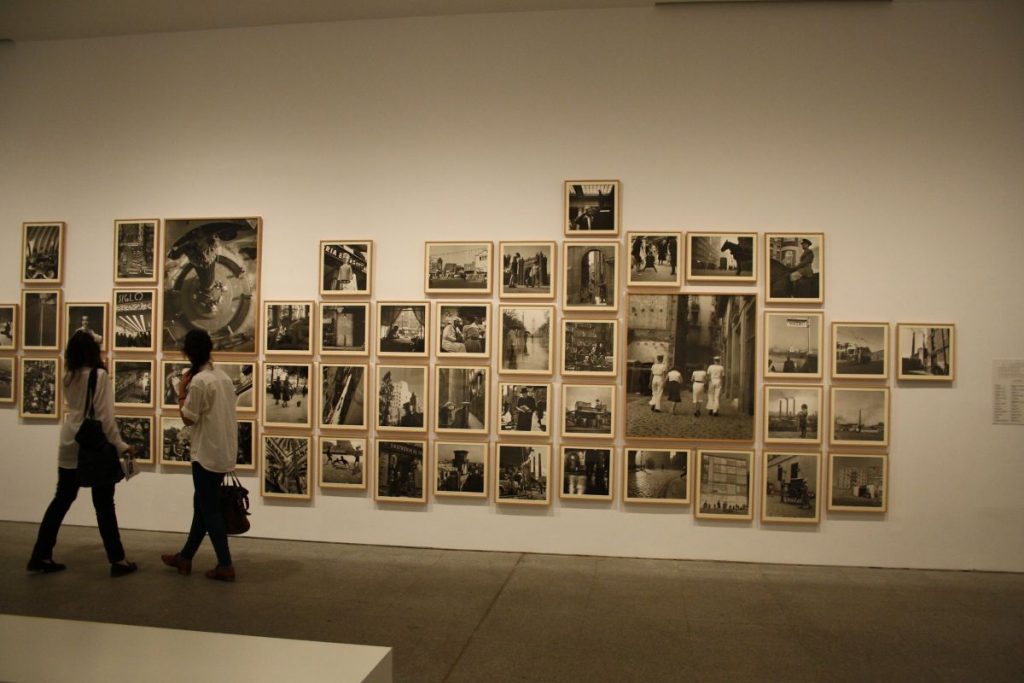
The photography at Reina Sofía shouldn’t be missed. Photo credit: Nefertiti_inthefl
Related reading: Love museums? Then don’t miss these must-see masterpieces across town at Madrid’s Royal Collections Gallery!
“Un Mundo” (“The World”) by Angeles Santos
Created when she was just 17 in 1929, the monumental “Un Mundo,” or “The World” is a surreal-ish fantasyland on canvas, challenging the viewer to look beyond the physical world and into a different, imagined reality.
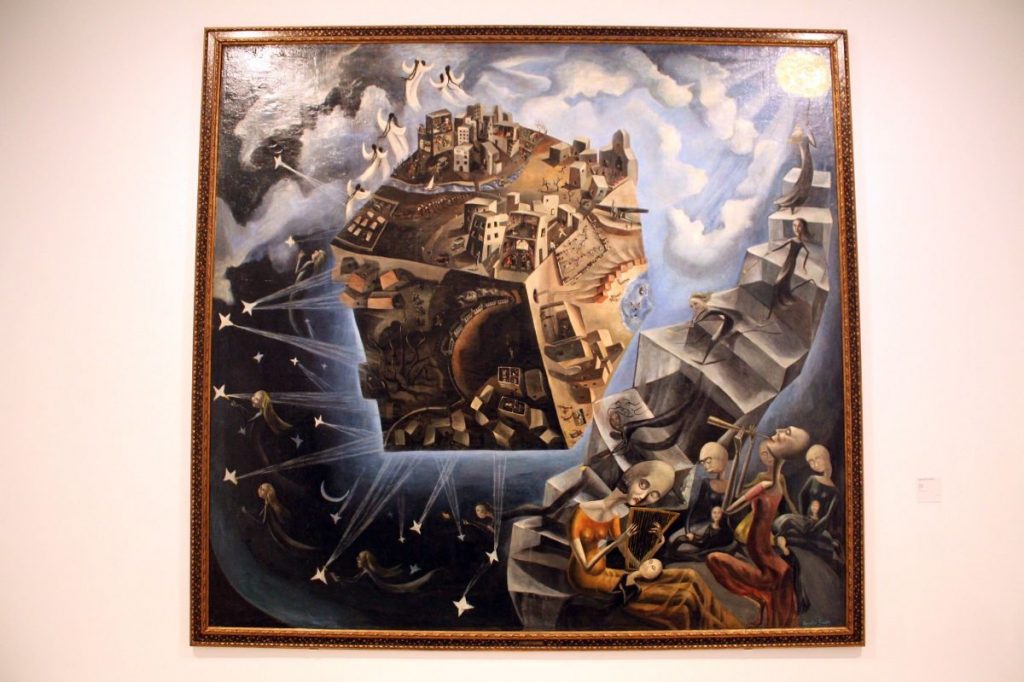
“The World” was originally painted in Valladolid, in Northern Spain. Photo credit: Shadowgate
“La Table du Musicien” (“The Tables Musician”) by Juan Gris
Painted by early-20th century Madrid-born painter, Juan Gris (that’s John Gray to you!), ”La Table du Musicien” was painted in 1926 when the painter had a terminal illness (he would succumb just a year later).
The painting is just a few objects on a table—a pipe, a guitar, a sad-looking bust—but exudes a kind of profound, but beautiful melancholy.

“The Tables Musician” depicts Juan Gris’s love for music. Photo credit: Google Arts & Culture
The Dalí Collection
The Reina Sofía owns **over 100 works of art—**though, most of them are paintings and sketches—by that wizard of weirdness, Salvador Dalí. They’re not all on display at the same time but expect to be wowed by some of his greatest works in room 209.
In particular, “Figura en una Finestra” (“Figure at a Window”) is stop-you-in-your-tracks stunningly beautiful. This is a more classic-looking painting, not the LSD trip on canvas—melting clocks and deformed sentient beings—that we usually associate with Dalì. For that, make sure you check out his infamous “Face of the Great Masturbator” in room 205.
Dalí highlights to keep an eye out for:
- “Figura en una Finestra” (“Figure at a Window”)
- “El Rostro del Gran Masturbador” (“Face of the Great Masturbator”)
- Additional paintings and sketches in Room 209

Have you ever seen this side of Dalí? Photo credit: Shadowgate
“Sonia de Klamery” by Hermen Anglada Camarasa
Barcelona-born Hermen Anglada Camarasa painted Russian ballerina Sonia de Klamery in 1913.
The vaguely Klimt-esque painting is dazzling with its contrast of bright and dark colors against the pale skin of the elegantly posed ballet dancer.
“Superposition de matière grise,” “Superimposition of Grey Matter” by Antoni Tàpies
This 1961 work was a revelation in its time, foreshadowing the eventual more common technique of artists using other types of materials and textures in their paintings.
Tàpies, who lived and died in Barcelona, is a master at tactile expression and this work is exemplary of that.
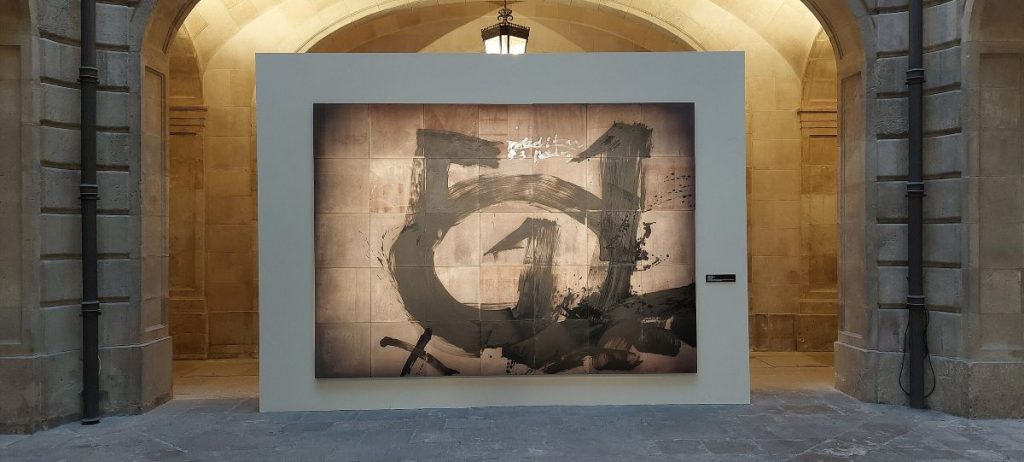
Tàpies’ art is a must-see and luckily for you, some of his works are at the Reina Sofía. Photo credit: Aniol
“Mujer en azul,” by Pablo Picasso
The museum has about 120 works by Picasso in its collection and most are overshadowed by the presence of “Guernica.”
When Pablo Picasso arrived in Madrid in 1901, he painted “Mujer en azul,” or “Woman in Blue,” a work that sat in oblivion for decades until the Reina Sofía acquired it in 1988 and it was met with great fanfare. After you see “Guernica,” point yourself to this lovely painting, said to be inspired by the work of Van Gogh and El Greco.
Ready to discover more? Join us on our Morning at Madrid’s Museums: Private Access Prado & Skip-the-Line Reina Sofia
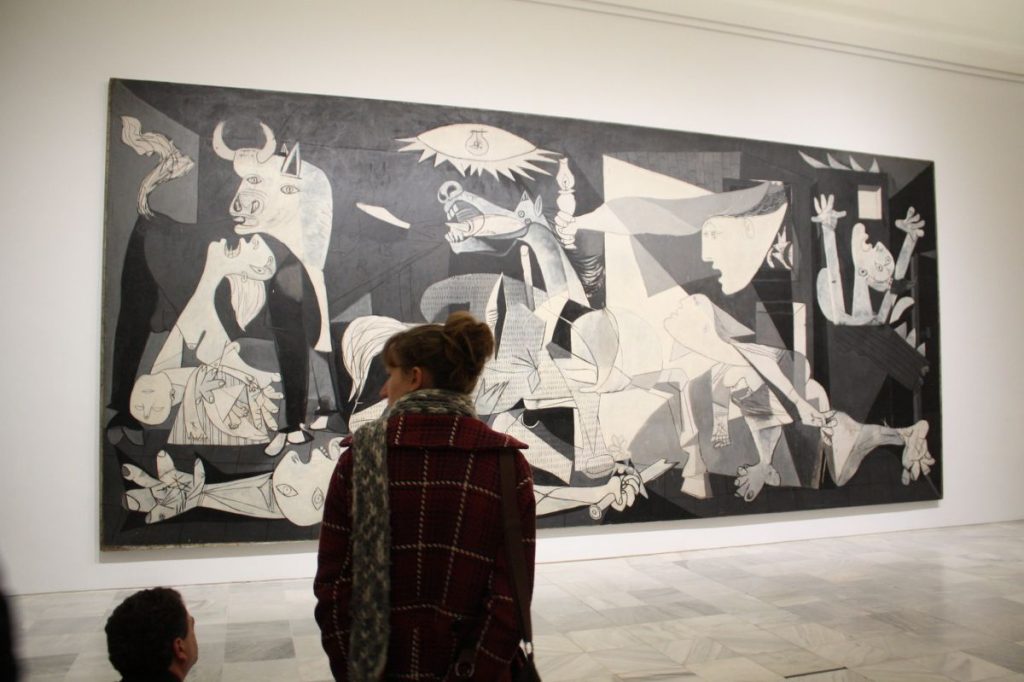
Take a break from the typical artworks visited at Reina Sofía and check out these hidden gems. Photo credit: Shadowgate
The Joan Miró Collection
Similar to their collection of the works of Salvador Dalí, the Reina Sofía holds a rich and abundant collection of art works by Catalan artist Joan Miró. In fact, there are about 200 various paintings, sculptures, and ceramic objects.
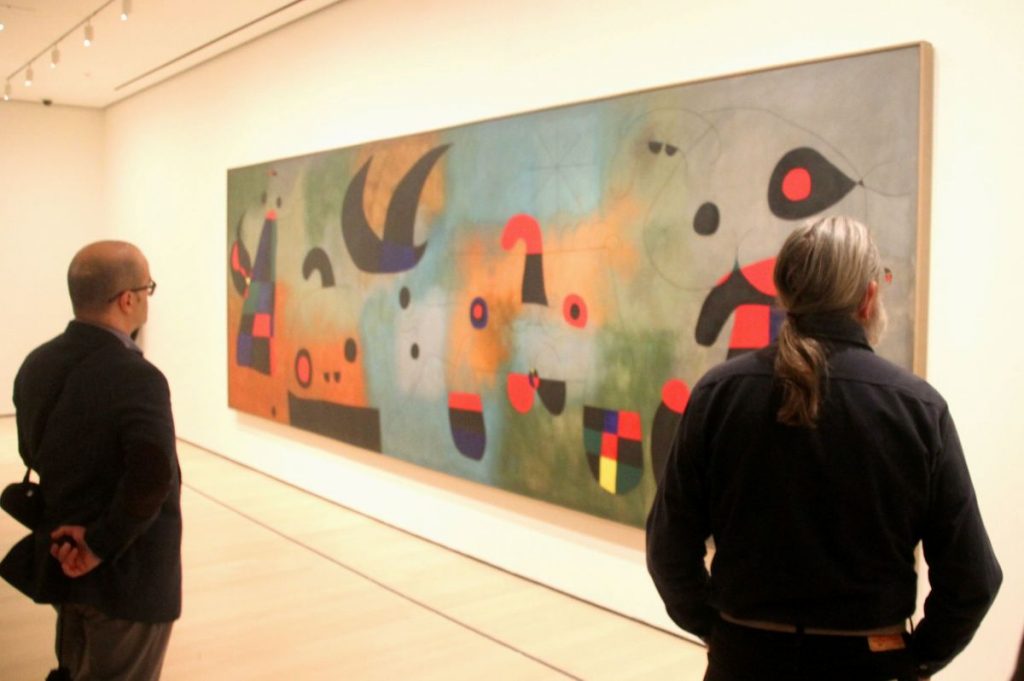
If you can’t make it to Joan Miró’s studio in Palma de Mallorca, his collection at the Reina Sofía is a great alternative. Photo credit: Terry Ballard
One of the most stunning is “Pienture (Escargot, Femme, Fleur, Étoile)” or “Painting: Snail, Woman, Flower, Star”), painted in 1934.
The painting is part of a set of works he did called “wild paintings,” which were inspired by the fear of the possibility that fascism was going to overtake Europe, in general, and Spain, in particular. His fear, unfortunately, proved to be prophetic.
Did you know that the Reina Sofia Museum was originally a hospital? Discover even more hidden gems at the Reina Sofía in our video guide!
Make the Most of Your Visit: VIP Morning at Madrid’s Museums Tour
If you’re ready to move beyond just seeing “Guernica” and want to experience the full breadth of masterpieces at the Reina Sofía (and the Prado!), consider joining the VIP Morning at Madrid’s Museums: Private Access Prado & Skip-the-Line Reina Sofía. This expertly curated tour is designed for art lovers who want to maximize their time and dive deeper into Spain’s greatest collections without the crowds.
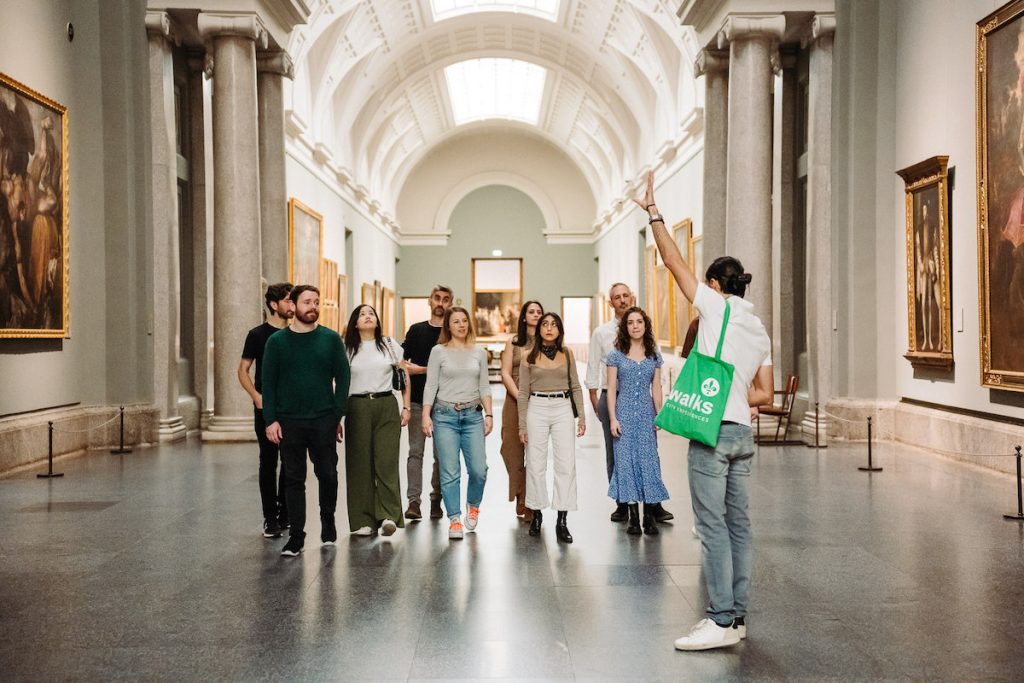
You’ll start your morning with exclusive, early access to the Prado Museum—home to works by Velázquez, Goya, and Bosch—before it opens to the public. With your expert guide leading the way, you’ll enjoy fascinating stories and context behind the paintings that have shaped art history. Then, you’ll head to the Reina Sofía, where you’ll skip the lines and explore not only Picasso’s iconic “Guernica” but also the incredible “hidden gems” highlighted above. Your guide will take you off the beaten path to discover works by Dalí, Miró, Juan Gris, and so much more, ensuring you leave with a richer understanding of Spanish—and global—modern art. It’s truly the ultimate way to experience Madrid’s two top museums in one seamless, enriching day.
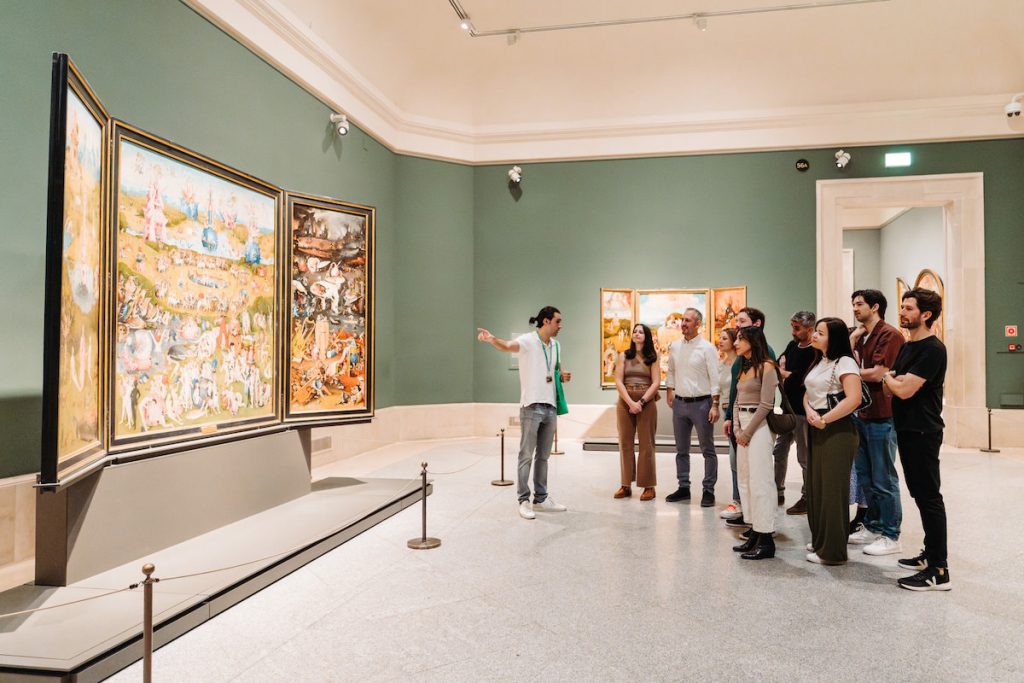
FAQ about the Reina Sofía Museum
What are the must-see highlights at the Reina Sofía Museum besides “Guernica”?
While “Guernica” is the undisputed star, don’t miss the incredible photography collection on the fourth floor, the Dalí masterpieces in Room 209, the surreal “Un Mundo” by Angeles Santos, and hidden gems by Juan Gris, Antoni Tàpies, and Joan Miró.
How much time should I plan for a visit to the Reina Sofía?
To truly make the most of your visit and see both the famous and hidden treasures, plan to spend at least 2–3 hours in the museum. If you want to explore the full collection—including temporary exhibitions and the gardens—consider setting aside half a day.
Is it worth booking a guided tour at the Reina Sofía?
Absolutely. A guided tour—like the VIP Morning at Madrid’s Museums: Private Access Prado & Skip-the-Line Reina Sofía—unlocks the stories behind the masterpieces and ensures you discover the lesser-known works that are easy to miss on your own.
Are there any tips for avoiding crowds at the Reina Sofía?
Yes! The museum tends to be quieter in the early morning and on weekday afternoons. Booking a skip-the-line or early access tour is also a great way to beat the crowds and get the most out of your visit.
Update notice: May 22, 2025.
Can’t get enough of the Reina Sofía? If you want to have the ultimate Reina Sofía experience—one where you can skip the line and couple it with a visit to the Prado—join us on our VIP Morning at Madrid’s Museums: Private Access Prado & Skip-the-Line Reina Sofía.
